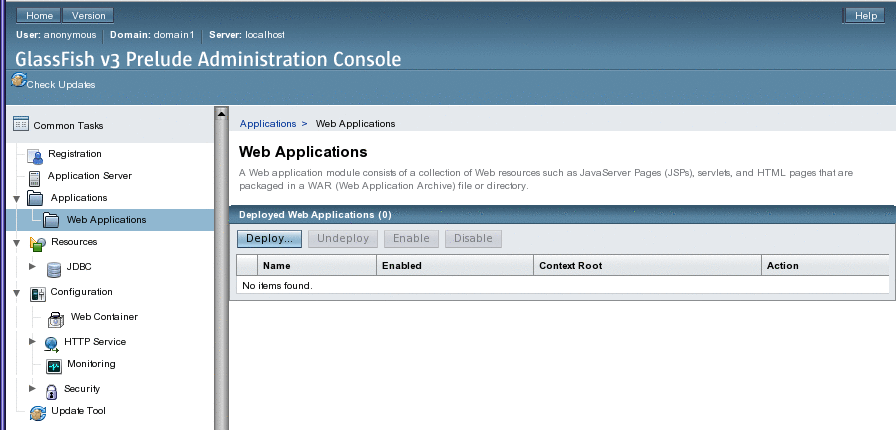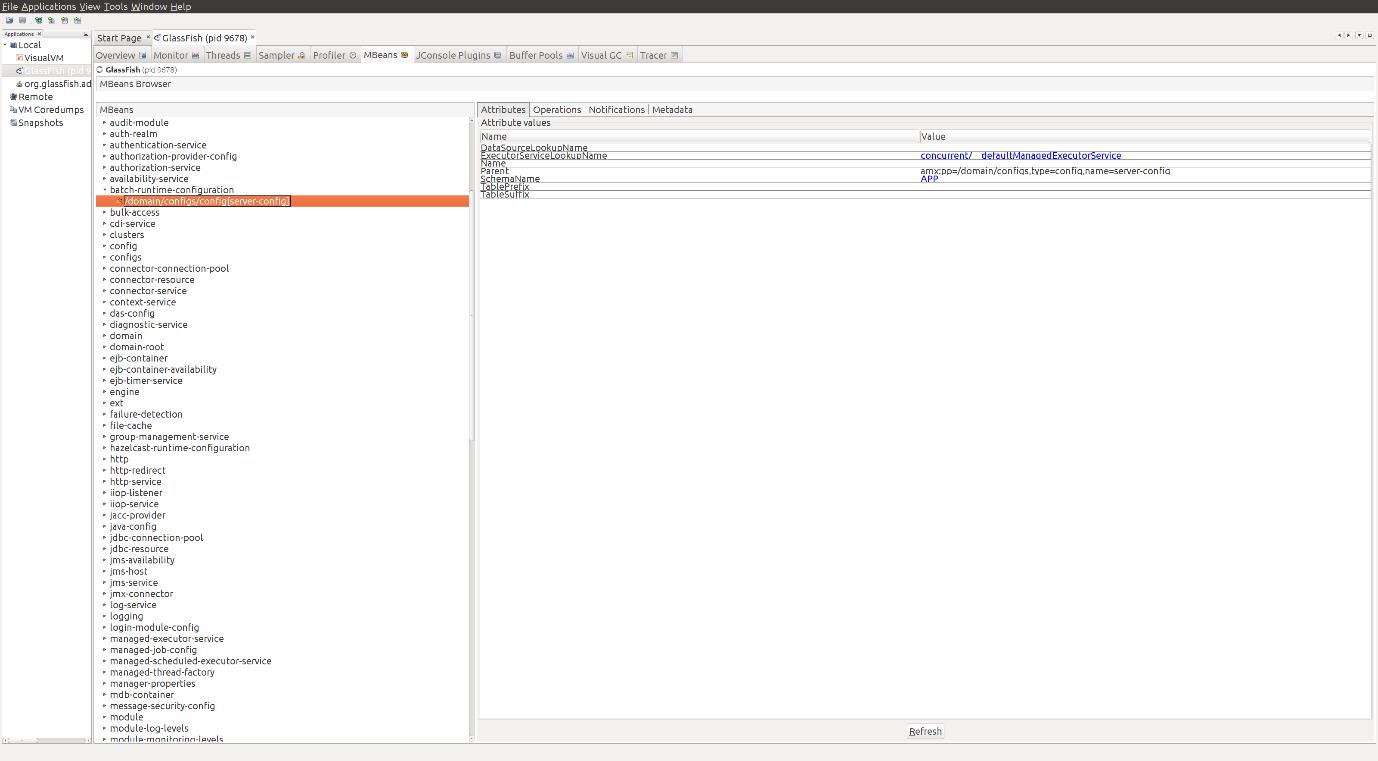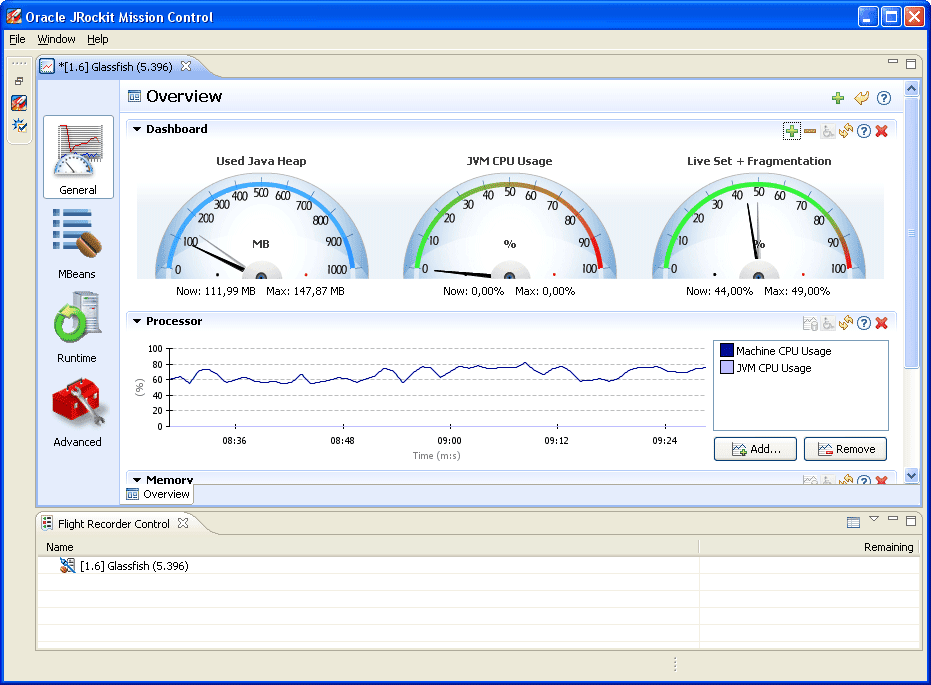

#Glassfish monitoring install#
It is recommended to install the latest version of the Monitor Framework available under OMi Management Pack Development Kit for latest features and quality enhancements. Prerequisite: OMi Management Pack for Glassfish depends on the Monitor Framework package which must be installed prior to installing the Management Pack. OMi MP for Glassfish is tested with following versions for Glassfish The performance and availability metrics are stored in HP Operations agent data store which is used by the reporting and graphing solutions. Service Model (RtSM) View, and out-of-the-box performance graphs. */10 * * * * echo `date`>/tmp/glassfish_memory.log /u01/app/glassfish/bin/asadmin get -monitor -count-count>/tmp/glassfish_memory.The HP OMi Management Pack for GlassFish Server (OMi MP for GlassFish Server) works with HP Operations Manager i (OMi) and enables you to monitor the availability and performance of GlassFish Server operating in your environment.The OMi MP for GlassFish Server includes Aspects and Runtime

The following example will execute every 10 minutes and write the datetime and the usedheapsize to a log file. Monitoring tools can offer customizable dashboards with intuitive features designed to help provide at-a-glance visibility into GlassFish with built-in and customizable component monitors. To schedule the monitoring of memory statistics, you could easily add a command line entry to your crontab file. A GlassFish monitoring tool is designed to help you monitor the performance of GlassFish servers and applications and more easily diagnose issues. count-description = Amount of used memory in bytes Use the “get –monitor” subcommand to retrieve the required monitoring statistics.Īsadmin> get -monitor .* To view the JVM memory statistics, click on the blue arrow next to “JVM: Memory Statistics”. You should now see the Server Monitoring screen (see screenshot below).

To specify the instance that you want to configure, add the “–target” option.Īsadmin> enable-monitoring -modules jvm=LOW -target myinstanceĬommand enable-monitoring executed successfully.Ĭlick on “Monitoring Data” in the left menu and then on “Server” (under “View Monitoring Data”) in the right menu. This LondonGUG session covers GlassFish v4 with focus on its management and monit. Training is open to future GlassFish server administrators. Use the subcommand “enable-monitoring” or “disable-monitoring” to enable/disable monitoring for a specific component. GlassFish comes with a variety of interfaces for management and monitoring. GlassFish Administration Training introduces participants to the secrets of the installation, configuration, management, monitoring GlassFish server. No instance restart is needed for this change. LastPass dark web monitoring checks your email addresses against a. Set the Monitoring Level of the JVM component to “Low” and click on Save. both a database and jms transaction then glassfish will contain a transaction in. You should now see the screen with the list of configurable components (see screenshot below). Monitor the cloud migration progress in Configurable Workspace Cloud Migration Assessment reference Components installed with Cloud Migration Assessment.

Now click on “Configure Monitoring” in the right menu for the instance you want to monitor. Start up the admin console (by default this runs on port 4848), log in as admin and click on “Monitoring Data” in the left menu. There are 2 ways to enable JVM monitoring: by using the graphical admin console, or from the command line by running the asadmin command. In this blog post I will explain how you can enable and monitor the memory statistics of the Java Virtual Machine in GlassFish 3.1.2. Environment: GlassFish OSE 3.1.2.2, Oracle Linux 6.3


 0 kommentar(er)
0 kommentar(er)
